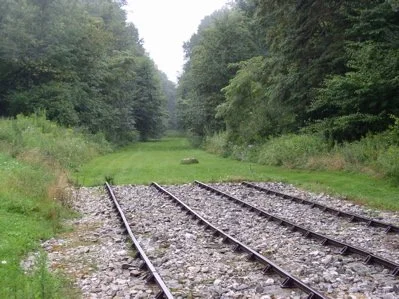Allegheny Portage Railroad National Historic Site
Website:
https://www.nps.gov/alpo/index.htm
Telephone Number:
Location:
110 Federal Park Road, Gallitzin, PA 16641
Description:
In the early 1800’s travel and trade was done by Conestoga wagons. This was the best means of transportation at that time. It took 23 days to get from Philadelphia to Pittsburgh, when the dirt roads were in good condition.
In the mid-1820’s the state of New York built a canal system which let trade become more efficient. This was known as the Erie Canal. Pennsylvania’s business in trading relations dropped and plans began for building their own canal system. In February 1826 the Main Line of Public Works was authorized by the Pennsylvania legislature to begin the building of canals from Philadelphia to Pittsburgh. There was only one problem with the building of the canals, the Allegheny Mountains. How could a canal system be built through or over the mountains?
The first plan was to build a four mile tunnel through the bottom of the mountain, but this was found costly and unrealistic. Tunnel building was new and it was questionable if water could be kept in the tunnel. It was decided to build a railroad system of ten inclined planes, 5 ascending and 5 descending. This system was modeled after a similar system in England.
The railroad was equipped with ten inclined planes, five on each side of the mountain. At the head of each inclined plane were stationary engines, which moved endless ropes to pull the railroad cars up the mountain. This incline system was used because the locomotives of this time did not have the power to pull the cars up the steep mountains. Locomotives were used on the more level areas of the mountain. The Allegheny Portage Railroad was 36 miles in length connecting the Hollidaysburg Canal Basin with the basin at Johnstown where canals finished the Public Works system into Pittsburgh.
The Portage Railroad officially opened March 18, 1834. It then became possible to travel from Philadelphia to Pittsburgh in 4 days. The total cost of the Public Works system was $16,504,655.84. The railroad system was $1,828,461.38. The railroad and canal system spurred trade in Pennsylvania. The system carried raw materials to the east and manufactured goods to the west. With the building of the Mainline of Public Works Pennsylvania began an era of prosperity leading to the creation of one of the greatest industrial states in the nation. The Allegheny Portage Railroad was in operation for a little over 20 years from 1834-1857.
On February 15,1854, the Pennsylvania Railroad company completed the Horseshoe Curve and, thus, its all rail line from Philadelphia to Pittsburgh. The completion of the Pennsylvania Railroad took business from the Public Works system. The new Pennsylvania Railroad had no inclines and did not require the switch on and switch off that the five divisions of the Pennsylvania Mainline Canal required. The Public Works system was unprofitable. The Commonwealth first put the Pennsylvania Canal up for sale with the Act of April 29, 1844, with no buyer. Nearly 10 years later, the Commonwealth tried again with the Act of April 27, 1854, but again there was no buyer. A year later, the Commonwealth tried, yet again, with still no buyer. After some persuasion by the Pennsylvania Railroad Company, the state passed the Act of May 16, 1857. With that, the Pennsylvania Railroad came to the state's rescue and purchased the canal for $7,500,000-a price set by the railroad-at the Merchant’s Exchange in Philadelphia. The purchase took place on June 25, 1857 and the Pennsylvania Railroad took possession on August 1, 1857.
From NPS website

